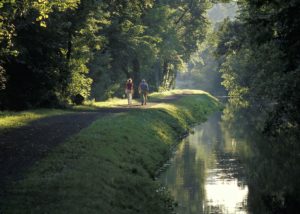Pollution Prevention
- 30% of PA’s streams (25,468 miles) have impaired water quality for one or more uses: water supply (84 miles), aquatic life (17,547 miles), recreation (9,935 miles), and fish consumption (2,817 miles). (2020 Integrated Water Quality Report)
- Agricultural runoff has impaired 5,765 miles of PA streams, including a 46-mile segment of the Susquehanna River that can no longer sustain aquatic life. (DEP IWQR 2018)
- PA is one of the six states within the Chesapeake Bay Watershed that has committed to significantly reducing the nitrogen flowing into the Bay by 2025. However, PA is responsible for 69% of the watershed’s total nitrogen reduction. 80% of PA’s reductions belong to the agricultural sector. (DEP Agriculture)
- More than 5,500 miles of PA streams have been polluted by billions of gallons of acid mine drainage (AMD) – one of PA’s largest sources of stream impairment. (DCED AMDATP)
Flood Reduction and Stormwater Management
- From 2011 to 2018, PennDOT incurred $211 million in damages to state roads and bridges caused by flooding, slides, and other extreme weather events. (PennDOT flood/slide costs).
- Fulfilling MS4 requirements, which apply to more than 1,000 municipalities across PA, costs municipalities millions a year. (PA Environment Digest)
Land Conservation and Restoration
- DEP’s abandoned mine land (AML) inventory has identified 287,000 acres of AML in need of reclamation, their construction cost exceeding $5 billion. (DEP AML Fact Sheet).
- There are more than 8,500 abandoned or orphaned oil and gas wells in PA. Plugging them costs DEP $33,000, meaning DEP’s plugging liability ranges between $280 million (8,500 wells) and $6.6 billion (200,000 wells). (Bureau of Oil and Gas Planning 2020)
- The US Department of Agriculture census estimates that between 2012 and 2017, PA lost more than 6,000 farms (400,000 acres) to development, declining farm incomes, and retirements. (USDA census)
- PA’s farmland preservation program has a backlog of 1,400 farm families wanting to preserve their farms and help stabilize local farm economies. (Bureau of Farmland Preservation, 2020 Annual Report)
Outdoor Recreation
-
- Public use of parks, preserves, and trails has doubled, tripled, and quadrupled across the Commonwealth. As the state reopens, it appears that considerably higher public use of outdoor recreation spaces is a new norm for Pennsylvania.
- In the past year, more than 9 out of 10 Pennsylvanians engaged in outdoor recreation. (2019 Spring Lion Poll, used in SCORP 2020-2024)
- PA’s trails experienced a 97% increase in visitation from 2018 to 2020. (DCNR 2020 Parks & Rec)
- In March 2021, PA’s 121 state parks drew 2.71 million visits compared to 1.77 million visits in March 2019. (Philadelphia Inquirer)
- This higher demand has greatly accelerated wear-and-tear on facilities and the need for rehabilitation of many of the state’s 6,100 local parks and more than 12,000 miles of trails.
- PA’s State Parks and State Forests have more than a $1 billion backlog of maintenance, safety, and necessary infrastructure. (Protect our Parks and Forests).
- PA experienced a spike in outdoor spending from March 2019 to March 2020, with bike purchases increasing 121%, kayak purchases 85%, and camping gear 30%. (DCNR 2020 Parks & Rec)
- Public use of parks, preserves, and trails has doubled, tripled, and quadrupled across the Commonwealth. As the state reopens, it appears that considerably higher public use of outdoor recreation spaces is a new norm for Pennsylvania.
Return on Investment
(See the Economic Benefits section of https://conservationtools.org)
- Green infrastructure investments support small businesses and create jobs. They are proven programs for stimulating local economies across the state.
- Green infrastructure investments continue giving to communities year-after-year, decade-after-decade. For example, the Keystone Recreation, Park & Conservation Fund delivers $7 in flood control and prevention, water treatment, and other natural services for every dollar invested. (org)
Public Opinion
(TargetSmart survey of 1,332 likely PA voters conducted September 20-27, 2020; credibility interval of +/- 3.0%)
- 96% of PA voters said protecting the quality of the PA’s drinking water is very or somewhat important while 92% of voters believe it is very/ somewhat important to clean up rivers and streams.
- Support transcends party affiliation: “Protecting PA’s drinking water” is found to be very important by 75% of Republicans, 84% of Independents, and 92% of Democrats.
- 9 out of 10 Pennsylvanians support increasing state funds to conserve and protect open space, clean water, natural areas, wildlife habitats, parks, historic sites, forests, and farms.
- 91% of PA voters believe that is a time of COVID, it is more important than ever to have parks, preserves, and other public spaces where we can safely enjoy the outdoors.
- 93% of Pennsylvanians agree — 68% strongly — that “we have a moral obligation to take care of our environment.”
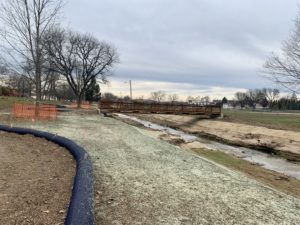
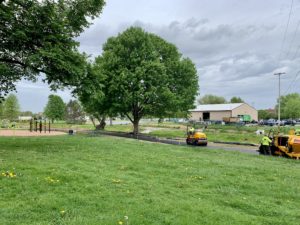
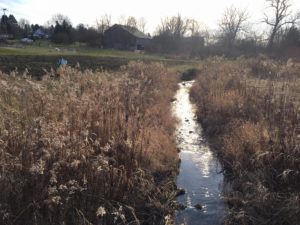 Work on the Schaeffer family’s 3.7 acre buffer along Halfmoon Creek began in fall 2020. Initial efforts on the family’s organic farm included site preparation with assistance from local farmers, invasive species removal by ClearWater’s AmeriCorps member, Sidney Shultz, and planting of native trees and shrubs along Halfmoon Creek by Native Creations.
Work on the Schaeffer family’s 3.7 acre buffer along Halfmoon Creek began in fall 2020. Initial efforts on the family’s organic farm included site preparation with assistance from local farmers, invasive species removal by ClearWater’s AmeriCorps member, Sidney Shultz, and planting of native trees and shrubs along Halfmoon Creek by Native Creations.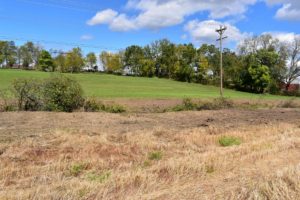 Implementation of the 9-acre buffer along Slab Cabin Run on Joe Dionisio’s property began in summer 2020 with the removal of a large thicket of invasive shrubs along the stream. Due to the impenetrable thickness and size of the invasive shrubs, the work could not be completed by hand, but Bud Snyder Excavating was able to use a forestry mulcher machine to remove the invasive shrubs in a few days. In Fall 2020, Native Creations was able to then plant native trees and shrubs, a streamside forest, along Slab Cabin Run.
Implementation of the 9-acre buffer along Slab Cabin Run on Joe Dionisio’s property began in summer 2020 with the removal of a large thicket of invasive shrubs along the stream. Due to the impenetrable thickness and size of the invasive shrubs, the work could not be completed by hand, but Bud Snyder Excavating was able to use a forestry mulcher machine to remove the invasive shrubs in a few days. In Fall 2020, Native Creations was able to then plant native trees and shrubs, a streamside forest, along Slab Cabin Run.